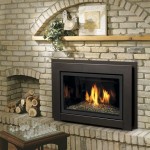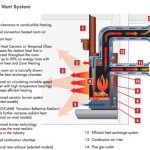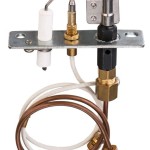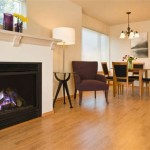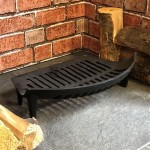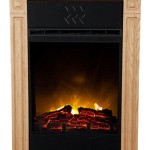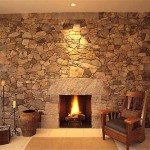Outside Gas Fireplaces: Extending Living Spaces and Enhancing Ambiance
An outside gas fireplace represents a significant investment in home aesthetics and functionality, offering a compelling combination of visual appeal and practical heating for outdoor living areas. These fireplaces have gained considerable popularity as homeowners increasingly seek to extend their indoor lifestyles into the outdoors, creating comfortable and inviting environments for socializing, relaxing, and entertaining throughout the year.
The design and implementation of an outside gas fireplace require careful consideration of several factors, including the overall aesthetic of the outdoor space, the intended usage of the fireplace, local building codes and regulations, and the available fuel source. A well-planned and executed outdoor fireplace can transform a simple patio or backyard into a sophisticated and functional extension of the home.
Benefits of Outside Gas Fireplaces
Outside gas fireplaces offer numerous benefits compared to traditional wood-burning fireplaces or other outdoor heating options. These advantages stem from their convenience, efficiency, and environmental considerations.
Convenience and Ease of Use: Unlike wood-burning fireplaces, gas fireplaces eliminate the need for sourcing, storing, and handling firewood. They also eliminate the challenges associated with starting and maintaining a fire, as gas fireplaces typically ignite with the push of a button or the flip of a switch. This ease of operation makes them a particularly attractive option for homeowners seeking a hassle-free heating solution.
Clean Burning and Environmental Friendliness: Gas fireplaces produce significantly fewer emissions compared to wood-burning fireplaces. This reduced emission rate contributes to improved air quality and minimizes the environmental impact associated with burning solid fuels. Modern gas fireplaces are designed with advanced combustion technologies that further enhance their efficiency and reduce their carbon footprint.
Precise Temperature Control: Gas fireplaces allow for precise temperature control, enabling users to adjust the flame height and heat output to suit their specific needs and preferences. This feature is particularly valuable during periods of fluctuating weather conditions, allowing for a comfortable and consistent outdoor environment. The ability to quickly adjust the heat output makes gas fireplaces more versatile for different seasons.
Safety Features: Modern gas fireplaces are equipped with various safety features, including automatic shut-off mechanisms that activate in the event of a gas leak or flame failure. These safety features provide peace of mind and minimize the risk of accidents. Safety measures also often include protective screens to prevent accidental contact with the flames.
Aesthetic Appeal and Design Versatility: Gas fireplaces are available in a wide range of styles, sizes, and materials, allowing homeowners to select a design that complements their existing outdoor décor. From sleek and modern designs to rustic and traditional styles, there is a gas fireplace to suit virtually any taste. The ability to customize the appearance of the fireplace allows for seamless integration with the outdoor environment.
Design Considerations for Outside Gas Fireplaces
The design phase is crucial for ensuring a successful outdoor gas fireplace installation. Careful attention should be paid to various factors to create a functional, aesthetically pleasing, and safe outdoor living space.
Location and Placement: Selecting the optimal location for the fireplace is paramount. Consider factors such as prevailing winds, proximity to seating areas, and the overall flow of the outdoor space. The fireplace should be positioned in a way that maximizes its heating capabilities while minimizing the risk of smoke or heat affecting nearby structures or vegetation. It is often beneficial to position the fireplace to act as a focal point for the outdoor area.
Size and Scale: The size of the fireplace should be proportionate to the size of the outdoor space. A fireplace that is too large may overwhelm the area, while a fireplace that is too small may not provide adequate heating or visual impact. Consider the dimensions of the patio or deck and the number of people who will typically be using the space when determining the appropriate size of the fireplace.
Material Selection: The materials used to construct the fireplace should be durable, weather-resistant, and aesthetically pleasing. Common materials include brick, stone, concrete, and stainless steel. The choice of materials should complement the existing architecture of the home and the overall design of the outdoor space. Consider the long-term maintenance requirements of each material when making a selection.
Fuel Source and Gas Line Installation: Determine the type of gas fuel source that will be used, whether it is natural gas or propane. Natural gas is typically more cost-effective in the long run, but it requires a connection to a natural gas line. Propane fireplaces require a propane tank, which may need to be refilled periodically. Ensure that the gas line is installed by a licensed professional and that it complies with all local building codes and safety regulations.
Ventilation and Clearance: Proper ventilation is essential for ensuring safe and efficient operation of the gas fireplace. Ensure that the fireplace is installed with adequate clearance from overhead structures, such as roofs or awnings. Consult with a qualified installer to determine the appropriate ventilation requirements for your specific fireplace model.
Style and Design: Choose a fireplace style that complements the overall aesthetic of the outdoor space. Consider whether you prefer a modern, rustic, or traditional design. The fireplace should be a focal point of the outdoor area, but it should also blend seamlessly with the existing décor. Explore different design options, such as linear fireplaces, fire tables, or traditional fireplace designs, to find the perfect fit for your space.
Installation and Maintenance of Outside Gas Fireplaces
Proper installation and regular maintenance are crucial for ensuring the safe and efficient operation of an outside gas fireplace. These processes should be handled by qualified professionals to minimize potential risks and maximize the lifespan of the appliance.
Professional Installation: It is highly recommended to hire a licensed and experienced professional to install the gas fireplace. A professional installer will ensure that the fireplace is installed correctly and that it complies with all local building codes and safety regulations. Improper installation can lead to gas leaks, fires, or other hazards.
Gas Line Connection: The gas line should be connected by a licensed plumber or gas fitter. They will ensure that the gas line is properly sized and that it is connected to the fireplace in a safe and secure manner. A gas leak can be extremely dangerous, so it is important to have the gas line inspected and tested by a professional.
Safety Inspections: Regularly inspect the fireplace for any signs of damage or wear. Check the gas line for leaks, the burner for clogs, and the igniter for proper function. If you notice any problems, contact a qualified technician to make the necessary repairs. Regular safety inspections can help prevent accidents and ensure that the fireplace is operating safely.
Cleaning and Maintenance: Periodically clean the fireplace to remove any dirt, debris, or soot that may have accumulated. Use a soft brush or vacuum cleaner to clean the burner and the surrounding areas. Inspect the vent for any obstructions and clear them as needed. Regular cleaning and maintenance will help ensure that the fireplace operates efficiently and safely.
Winterization: In cold climates, it is important to winterize the gas fireplace to protect it from damage caused by freezing temperatures. Turn off the gas supply to the fireplace and drain any water from the gas line. Cover the fireplace with a waterproof cover to protect it from snow and ice. Proper winterization will help prevent damage to the fireplace and ensure that it is ready for use in the spring.
Professional Servicing: Schedule regular servicing of the gas fireplace by a qualified technician. A technician can inspect the fireplace for any potential problems and make the necessary repairs or adjustments. Regular servicing will help ensure that the fireplace is operating safely and efficiently. It is advised to schedule professional servicing at least once per year.
Outside gas fireplaces offer a compelling solution for extending living spaces and enhancing the ambiance of outdoor areas. By carefully considering design elements, ensuring proper installation, and adhering to regular maintenance practices, homeowners can enjoy the warmth and beauty of an outdoor gas fireplace for many years.

36 Outdoor Gas Fireplace Electronic Ignition Fine S

Napoleon Outdoor Fireplace 42 Riverside Clean Face Gss42cfn Hvacdirect Com

Choosing The Right Outdoor Fireplace Ethanol Wood Propane Fireplaces

Outdoor Gas Fireplaces Landscaping Network

Gas Fireplaces For Outdoor Entertainment Perfect Patios

Outdoor Gas Fireplaces Planikafires

Outdoor Gas Fireplaces Jetmaster

Napoleon Riverside 42 Clean Face Outdoor Gas Fireplace Hearth Stove Patio

Regency Horizon Hzo42 Outdoor Gas Fireplace The Energy House

Outdoor Lifestyles Courtyard Gas Fireplace Fireside Hearth Home

